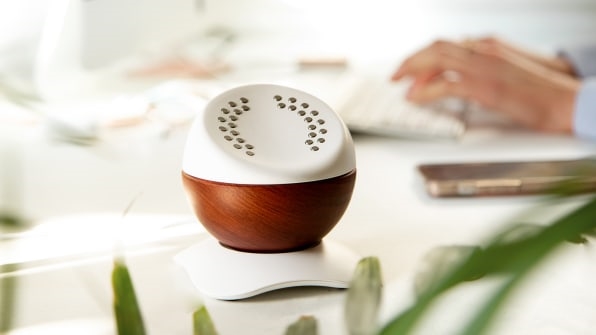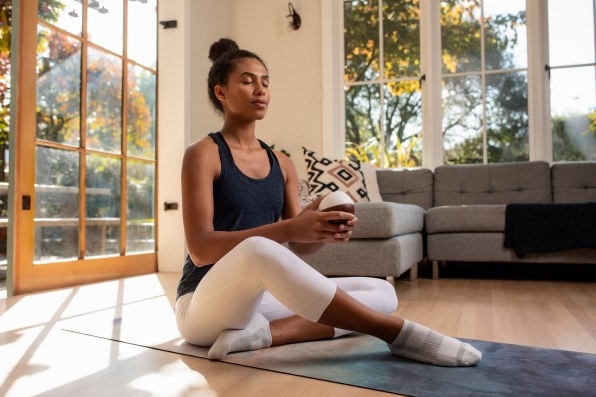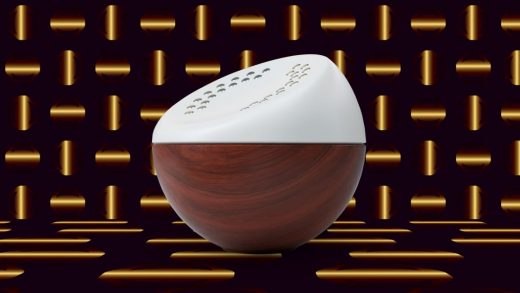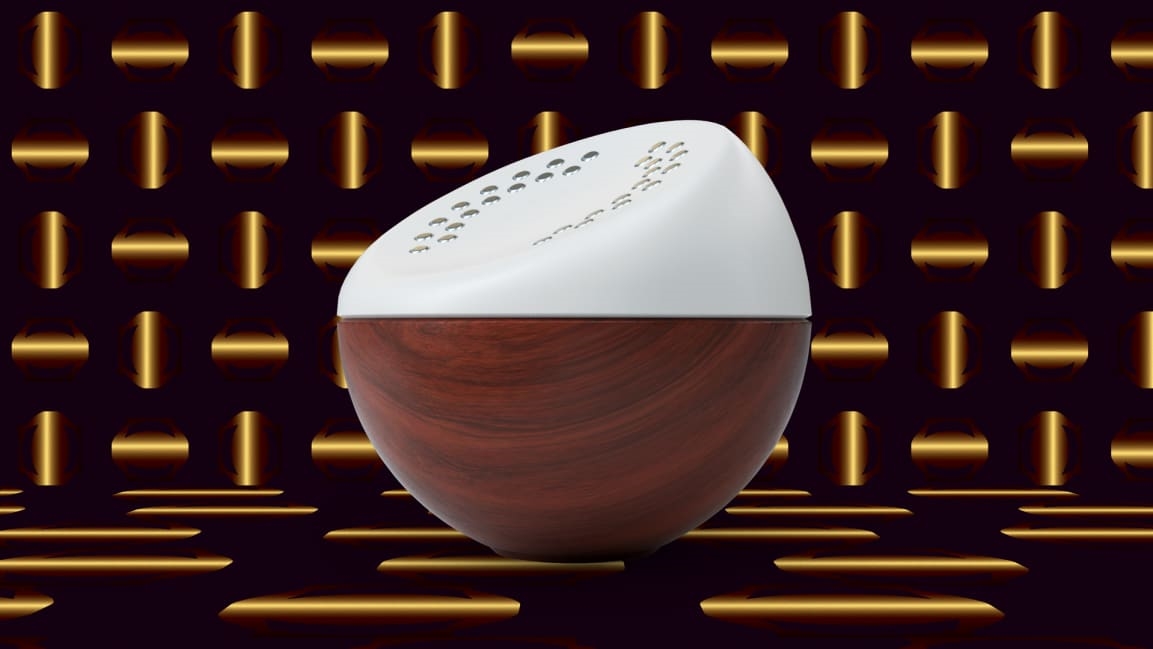This meditation training device will help you make mindfulness part of your daily routine
I’m not necessarily a high-strung person, but I tend to have a lot going on. I’m not quite Michelle Pfeiffer with all her little balls in the air, à la One Fine Day, but I’m pretty close! This tends to seep into my sleep patterns—which I am forever in pursuit of improving—in the form of tensing up long after I’ve snoozed off. All the stress of the day kicks in sometime after 11 p.m.
I tense my jaw and shoulders in the night, and both trigger migraines that not even my beloved Purple pillow can solve. In an effort to reduce this stress, I decided to try docking Hyperice’s Core Meditation Trainer beside my bed.

The Core Meditation Trainer looks like a creviced Poké Ball—a grapefruit-sized orb with two rows of metal electrocardiogram (ECG) sensors along its groove. When you hold the ball in your hands, those sensors track your pulse and heart rate variability as you breathe and focus, guided by the app. It buzzes along to breathing exercises and guided meditations (via an accompanying app) and emits vibration patterns to signify when you should breath in and out. Sometimes it simply keeps you in the zone with wave-like patterns of trembles.
Core originally debuted in 2018, the brainchild of founder Sarah McDevitt, who turned to meditation following a series of anxiety-inducing challenges. Hyperice, known for its popular Hypervolt range of percussion massage tools, acquired the company in late July.
The meditation training device is meant to be a solution for those who lack the discipline to keep up with a consistent meditative practice—which (I’ll take a guess) is most of us. Despite meditation and breathwork becoming more commonplace, maintaining the practice can be a challenge.
Core is the physical manifestation of a daily reminder. It solves two of meditation’s biggest issues: consistency and focus. Like a spin bike that takes up half of your living room or the yoga mat you trip over daily, Core makes sure that meditation isn’t hidden away in an app. The device is positioned as a trainer, helping users create a regimen, make goals, and stick to them. And like a trainer, once you’re engaged with it, it doesn’t let your mind wander.

The first few times you use Core, it guides you through different types of breathing techniques: water, whisky, etc. The orb’s vibrations pulsate and speed up and slow down as the app walks you through how many seconds to hold your breath—and how many seconds to go between breaths. This sounds simple and maybe not really worth the $179 price tag, but the tangible object helps more than you might think.
I’ve tried the Breathwrk and Headspace apps and enjoyed both, learning to recalibrate and get back to a mindful place through structured breathing. But both exist on my phone, where my brain inevitably wanders toward TikTok and my inbox.
Core also operates via an app that includes a menu of practices, ranging from soundscapes to motivational breathwork. But once you pick your session, you don’t need your phone within reach. (Put it in the other room if you want.) The device becomes the key to your meditation.
The entry-level Core purchase ($179) comes with access to basic—but good—meditation sessions. If you’re further along in your practice, you can spend an extra $70 for the annual premium membership, which expands that library. But for people who just want the product and the basics, there’s plenty to work with. And if you’re a quantified self kind of person, Core’s app monitors your vitals as you get deeper into your practice. I am satisfied enough to simply see my heart rate consistently slowing to a more doctor-friendly pace after a session.
I like having Core—sitting on its cute charger—next to my bed, ready for a quick session before I go to sleep. I do think it’s too expensive. But I also imagine it looking at home in an office or wherever you practice yoga or cool down—places where a physical reminder to pay attention to your mental health could be useful.
For me, connecting to those vibration patterns does help me get my brain off my to-do list and into a place where I’m preparing my body for sleep. Those 8 to 10 minutes set a tone for the night—one where I would typically close out an app and tap into TikTok five seconds later.
So far, my regular nightly Core practices have kept my body from tensing up an hour or so after I finally close my eyes. And that is my definition of inner peace.

(43)



